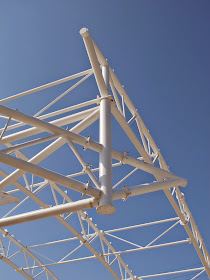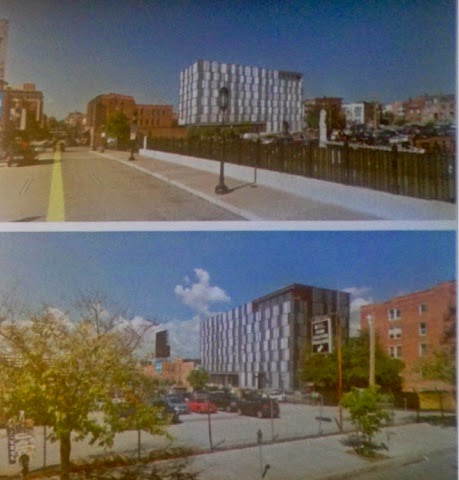Like so many others I am sad and devastated tonight. I feel that 29 years of what I fought for here is going up in smoke and flames right now. Tomorrow which seemed to be bursting with opportunity has been deflated.
The shock and awe from seeing the area around my office become engulfed with marauding youngsters is in my bones as a physical experience I have never had or seen before. There is no glory in this type revolution in which the biggest devastation happens where the needs are the greatest. Churches on fire. Like a terrible nightmare.
The actual "tomorrow" this morning brought a new perspective. After touring the area on Baltimore's west-side I noted this on Facebook:
The Sun is up, the smoke has cleared and Baltimore wakes up as a changed city. Almost all pharmacies and convenience stores in the inner city looted, some burned. The CVS in Rosemont/west Balto burned and shattered. But traffic flows, birds are singing, the construction workers at Paca and Franklin continue to build student apartments, some bike to work. The brooms are out and a city is picking up. How far we are thrown back will depend on how much we can come together today.Today, in the afternoon at the same time the unrest had started to build here yesterday, in stark contrast to yesterday this happened: A group of African American men in T-shirts stating "300 Men March" walked down Eutaw to keep peace. This group has marched to keep peace in neighborhoods for years:
We are a movement of men and women across the entire City of Baltimore united to press the issue of everyday gun violence in our urban neighborhoods. We do not protest, we do not blame others, we are not a prayer group. We are citizens, fed up with current accepted patterns of violence in our community. We exist to fulfill our mission. Our mission is to decrease gun violence.Baltimore County moved into the spotlight as well with social media sharing a slide indicating that a "purge" was planned for Security Square Mall in Woodlawn". Probably a hoax, hard to imagine how disruptive protest should work there, as isolated and non walkable the mall is.
It is too early to declare this day a success. It is too early to draw definite conclusions about what needs to be done. The damage is far larger than brick and mortar or glass that was destroyed. Damage includes the reopened question how safe a place this city really is, it includes the rekindled distrust in young black men and the question how strong the compact is which unites the citizens of Baltimore across races and classes.
Many messages I received from folks of all walks of life gave me courage and renewed optimism. I will try to sort them out for my weekly blog. One message I received from a new friend and resident who came from far to make Baltimore her new hometown gave me the hope that our new residents are not as thin skinned or shaky in their allegiance as one may fear. Far from turning her back on her new city she stated this:
My new home. Wishing us all peace. And that what is at the core of all this.... the complex core.... will find justice and resolution.The strange thing is yet to come. A baseball game at Camden Yards under exclusion of the public. It would be nice if we had the courage to make it public but the game on Saturday when fans ran into unrest around the stadium has given everybody pause.
Klaus Philipsen, FAIA
Link to a BBJ open letter: Invest in People Now!
Link to BBJ economic cost:
Friends, BSO family and all who love the great City of Baltimore:Join musicians of the Baltimore Symphony Orchestra outside the Meyerhoff at 12 noon TOMORROW, 4/29, for a free concert in support of our community. It seems we could all use a little music in our lives right about now. #BSOPeace"This will be our reply to violence: to make music more intensely, more beautifully, more devotedly than ever before."-Leonard Bernstein
 |
| This morning bright and early men were using weedwhackers to care for Baltimore's famous Washington Square in Mt Vernon, home of the country's oldest Washington Monument |
 |
| Busted windows in the neighborhood, this a store that many don't know, a true treasure trove frequented by police, outdoor enthusiasts and alternatives alike |




































